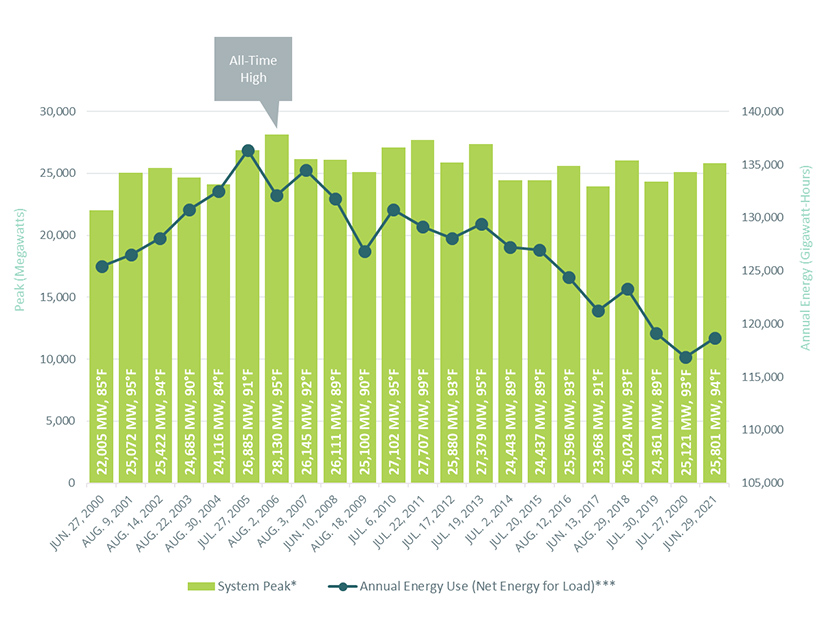New England might not be facing the same dire system reliability warnings as other regions this summer, but periods of above average temperatures could still stretch the grid and force ISO-NE into emergency action, the grid operator said Wednesday.
The region is “expected to have sufficient resources to meet consumer demand for electricity this summer under typical weather conditions,” ISO-NE said in its summer outlook.
But peak system conditions brought on by above average hot and humid weather could lead to “tight supply margins,” the RTO said. That could lead ISO-NE to call on emergency imports or reserves, ask residents to conserve energy, or issue controlled power outages in extreme cases.
“Climate change has caused weather to become more volatile and less predictable, increasing the potential for system operators to resort to these actions,” it said.
NERC has warned that large swaths of the country in the West, Midwest and Texas are facing possible supply shortfalls this summer. MISO in particular is facing a “high risk of energy emergencies during peak summer conditions” because of a capacity shortfall and the outage of a key transmission line. (See West, Texas, Midwest at Risk of Summer Shortfalls, NERC Says.)
ISO-NE is forecasting that under typical weather conditions, demand will reach 24,686 MW. An extended heat wave could push demand to 26,416 MW, which would be higher than last summer’s peak of 25,801 on June 29. The all-time record for electricity demand is 28,130 MW in 2006.
The region has more than 31,000 MW of capacity available for the summer, including generation, demand response resources and imports.
The summer forecast incorporates more than 2,100 MW of energy-efficiency measures, ISO-NE said, as well as a reduction of more than 900 MW from solar PV installations during peak hours.


